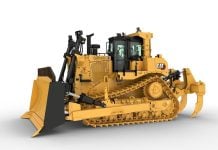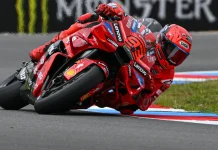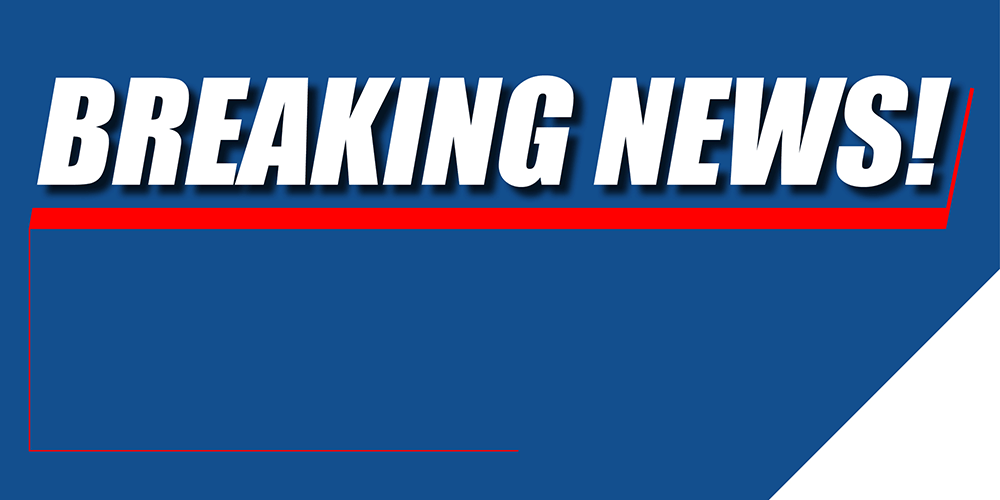This post will be updated as times become available
600cc Supersport Practice:
1. Yates, 1:27.753
2. Duhamel, 1:27.867
3. Gobert, 1:27.951
4. Hacking, 1:28.046
5. T. Hayden, 1:28.114
6. Hopkins, 1:28.460
7. Hayes, 1:28.712
8. Pridmore, 1:28.799
9. Aaron Gobert, 1:28.836
10. Acree, 1:29.032
11. Buckmaster, 1:29.095
12. R. Hayden, 1:29.099
13. Zemke, 1:29.103
14. Roberts, 1:29.119
15. Bostrom, 1:29.595
16. Parriott, 1:29.854
17. Moore, 1:30.039
18. Haskovec, 1:30.265
19. Patterson, 1:31.079
20. Livengood, 1:32.221
250cc Grand Prix Practice:
1. Rich Oliver, 1:27.168, Yamaha
2. Roland Sands, 1:29.157, Yamaha
3. Perry Melneciuc, 1:30.257, Yamaha
4. Chuck Sorensen, 1:30.644, Yamaha
5. Simon Turner, 1:30.752, Yamaha
6. Mike Hannas, 1:31.173, Yamaha
7. Derek King, 1:31.496, Honda
8. William Himmelsbach, 1:32.201, Yamaha
9. Ed Marchini, 1:32.464, Yamaha
10. Ben Walters, 1:32.643, Yamaha
11. Cory West, 1:32.692, Yamaha
12. Chris Pyles, 1:33.035, Yamaha
13. Ed Sorbo, 1:33.556, Yamaha
14. Greg Esser, 1:34.684, Honda
15. John France, 1:34.993, Honda
16. Scott Martin, 1:35.184, Honda
17. Ty Piz, 1:36.013, Yamaha
18. Steve Reeves, 1:36.083, Honda
19. Jim Filice, 1:36.267, Yamaha
20. James Bonner, 1:36.420, Yamaha
750cc Supersport Practice
1. Eric Bostrom, ZX-6R, 1:27.859
2. Ben Spies, GSX-R750, 1:27.997
3. Jimmy Moore, GSX-R750, 1:28.164
4. John Hopkins, GSX-R600, 1:28.363
5. Tommy Hayden, YZF-R6, 1:28.417
6. Justin Blake, GSX-R750, 1:28.527
7. Lee Acree, GSX-R600, 1:28.705
8. Roger Lee Hayden, CBR600F4i, 1:28.734
9. Vince Haskovec, GSX-R750, 1:28.766
10. Josh Hayes, CBR600F4i, 1:28.781
11. Chris Ulrich, GSX-R750, 1:28.787
12. Jason Pridmore, GSX-R600, 1:28.898
13. Anthony Lupo, GSX-R750, 1:29.388
14. Brian Gibbs, GSX-R750, 1:29.464
15. Ted Cobb, GSX-R750, 1:29.487
16. Brian Parriott, GSX-R600, 1:29.815
17. Rich Conicelli, GSX-R750, 1:30.021
18. Gabriel Henning, GSX-R750, 1:30.123
19. Mauro Cereda, GSX-R750, 1:30.487
20. Brian Stokes, GSX-R750, 1:30.865
AMA Superbike First Qualifying Session
1. Mat Mladin, 1:23.475
2. Anthony Gobert, 1:23.527
3. Nicky Hayden, 1:24.106
4. Aaron Yates, 1:24.158
5. Doug Chandler, 1:24.205
6. Eric Bostrom, 1:24.545
7. Jamie Hacking, 1:24.569
8. Larry Pegram, 1:24.770
9. Tommy Hayden, 1:24.921
10. Steve Rapp, 1:25.100
11. Miguel Duhamel, 1:25.217
12. Kurtis Roberts, 1:25.268
13. Andreas Meklau, 1:25.505
14. Mike Smith, 1:26.202
15. Jordan Szoke, 1:26.423
16. Padcal Picotte, 1:26.438
17. Mike Ciccotto, 1:26.848*
18. Lee Acree, 1:27.789*
19. Jimmy Moore, 1:28.184*
20. Brian Parriott, 1:28.235*
21. Rich Conicelli, 1:29.057*
22. Wade Buffington, 1:29.156*
23. Gabriel Henning, 1:29.220*
24. Andrew Deatherage, 1:29.281
25. Chris Ulrich, 1:29.400*
26. Carlos Macias, 1:29.503
27. Mauro Cereda, 1:30.065*
28. Tony Meiring, 1:30.464*
29. Jim Doerfler, 1:30.887*
30. John Ashmead, 1:30.900*
*750cc Supersport entrant on 750cc Supersport racebike on DOT-labeled tires
Formula Xtreme Qualifying
1. Josh Hayes, Honda CBR929RR, 1:24.937
2. Damon Buckmaster, Yamaha YZF-R1/R7, 1:25.076
3. John Hopkins, Suzuki GSX-R1000, 1:25.458
4. Aaron Gobert, Yamaha YZF-R1/R7, 1:25.503
5. Roger Lee Hayden, Honda CBR929RR, 1:25.891
6. Jason Pridmore, Suzuki GSX-R1000, 1:26.246*
7. Mark Miller, Honda CBR929RR, 1:26.881
8. Jake Zemke, Honda CBR929RR, 1:27.055
9. Rich Alexander, Suzuki GSX-R1000, 1:27.627
10. Michael Barnes, Suzuki GSX-R750, 1:27.782
11. Steve Grigg, Kaw 850, 1:28.573
12. Scott Carpenter, Suzuki, 1:30.596
13. Billy Ethridge, Suzuki, 1:31.608
14. Troy Vincent, Suzuki, 1:32.010
15. Jame Thompson, Suzuki, 1:32.335
*Crashed, reported broken collarbone
750cc Supersport Qualifying
(All Suzuki GSX-R750 unless noted otherwise)
1. Mike Ciccotto, 1:26.396
2. Ben Spies, 1:27.143
3. Chris Ulrich, 1:27.664
4. Rich Alexander, 1:27.848
5. Vince Haskovec, 1:28.033
6. Kurtis Roberts, Honda CBR600F4i, 1:28.899
7. Rich Conicelli, 1:29.105
8. Brian Gibbs, 1:29.126
9. Brian Stokes, 1:29.201
10. Ted Cobb, 1:29.317
11. Daigoro Suzuki, 1:29.533
12. Tony Lupo, 1:29.801
13. Tony Meiring, 1:29.816
14. Scott Brown, 1:30.181
15. Gabriel Henning, 1:30.208
16. Jimmy Moore, 1:30.322
17. Scott Carpenter, 1:30.473
18. Andy Caldwell, 1:30.867
19. Randall Mennenga, 1:31.114
20. Mark Crozier, 1:31.154
21. John Ashmead, 1:31.181
22. David Ortega, 1:31.365
23. Steve Patterson, Suzuki GSX-R600, 1:31.388
24. Scott Gooch, 1:31.531
25. Brian Livengood, 1:31.828











